Coin collectors are often amazed by Indian Head penny value. It’s one of the most iconic coins in American history. These coins were first minted in 1859 and continued to be produced until 1909.
They were designed by James Barton Longacre, and depict Lady Liberty wearing a Native American headdress.
Initially, the coins were made of 88% copper, 12% nickel, and weighed 4.67 grams with a diameter of 19 millimeters.
Copper-nickel Indian Head pennies were minted from 1859 to 1864, but the rising price of nickel encouraged the public to begin hoarding the coins.
The composition changed to bronze and remained until the end of Indian Head penny production in 1909.
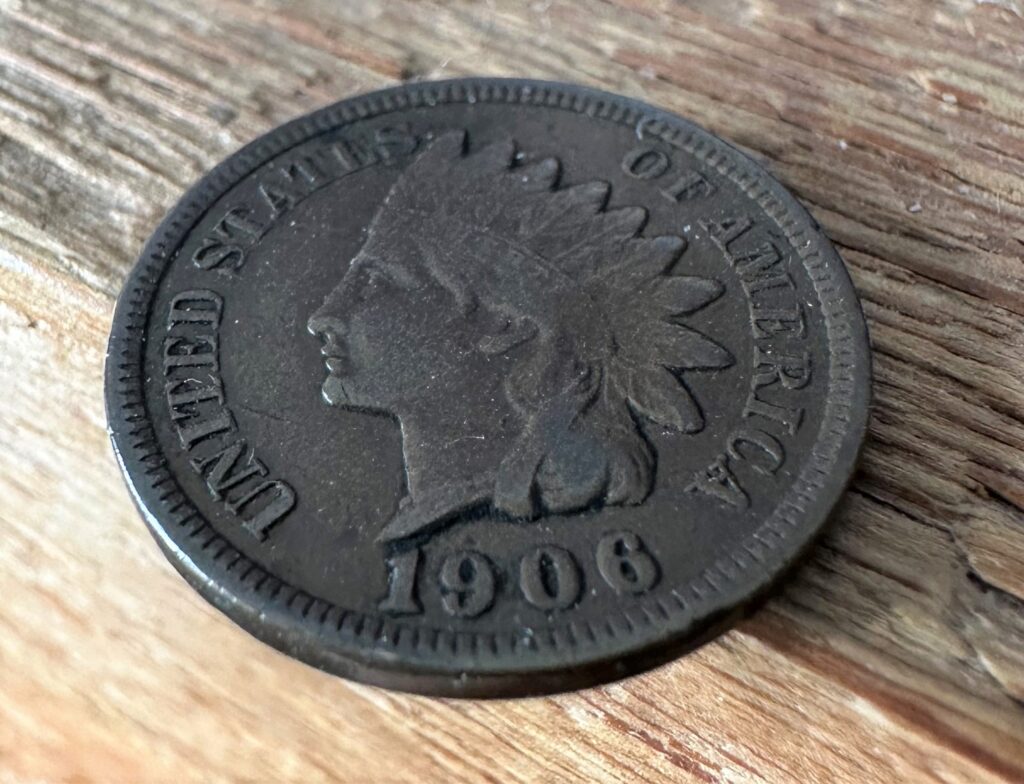
Indian head cents were initially minted in Philadelphia, but production was later moved to San Francisco and New Orleans.
How Much is an Indian Head Cent Worth?
Indian Head cents replaced the Flying Eagle pennies, which were minted from 1856 to 1858. Designed by James Longacre, the Flying Eagle pennies were not well received, and Longacre replaced the eagle design with the Indian Head cent.
For the next 50 years, Longacre’s Indian Head design circulated around the country. Indian Head coin values continue to rise, as their collectibility has never been higher.
Indian head cents are now collectors’ items, and they are highly sought after by numismatics and coin collectors.
A circulated Indian Head cent in good condition is worth $10 to $20. In uncirculated condition, they are worth at least $100.
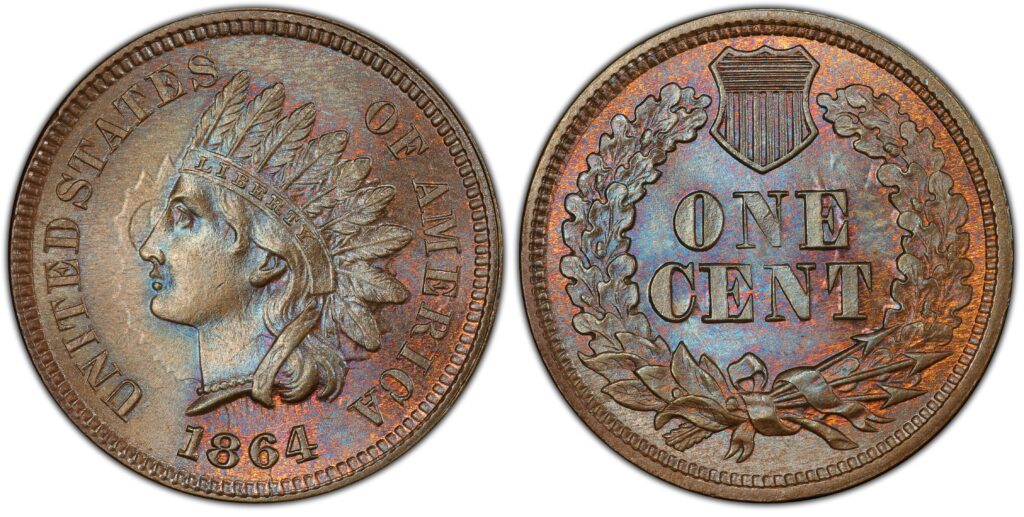
Indian Head Penny Design
Despite their modest size, Indian Head cents are highly collectible, with some examples fetching big money, sometimes in the tens and hundreds of thousands of dollars at auction.
For many collectors, the appeal of these one-cent coins lies in their unique history and classic design.
Today, an Indian Head penny in good condition is worth around $100, making them valuable coins for any coin collection.
In 1908, the penny was redesigned to feature Abraham Lincoln on the obverse side. Other similar coins, such as the Indian Head two-and-one half dollar with a male Native American in headdress began minting in 1908.
Indian Head coins continued to be minted until 1909 when they were replaced by the Lincoln cent.
Top 10 Most Valuable Indian Head Pennies
1864 PR65 Indian Head Cent Snow-PR2, L On Ribbon – $161,000
Six proofs of the 1864 Indian head cent have been graded by PCGS, but this is by far the rarest and most valuable. Other graded proofs include Deep Cameo, Red, and Brown examples.
The diagonal die line under the jaw and through the neck is raised and pronounced. Another intriguing indicator is where the date sits to the right of the bust point.
With shades of red, yellow, orange, violet, and blue, the toning and luster provide a rich and colorful example of an amazing U.S. coin.

1877-P MS66 Indian Head Cent, $149,500
The 1877 year marks the most difficult to find Indian head cent coins. With rarity comes big price tags, and even more difficulty finding an 1877 Indian head cent in excellent condition.
Only 852,000 Indian head pennies were struck at the Philadelphia Mint in 1877. There are only eight coins at the MS66 Red grade.

1872 MS66 Indian Head Cent Red, $126,500
Many Indian Head pennies from 1872 were melted down from an already low mintage year. The fully Red color makes this MS66 Indian Head cent a true rarity, and an extremely fine example.
1872 marks the fifth lowest mintage of all Indian Head production years.
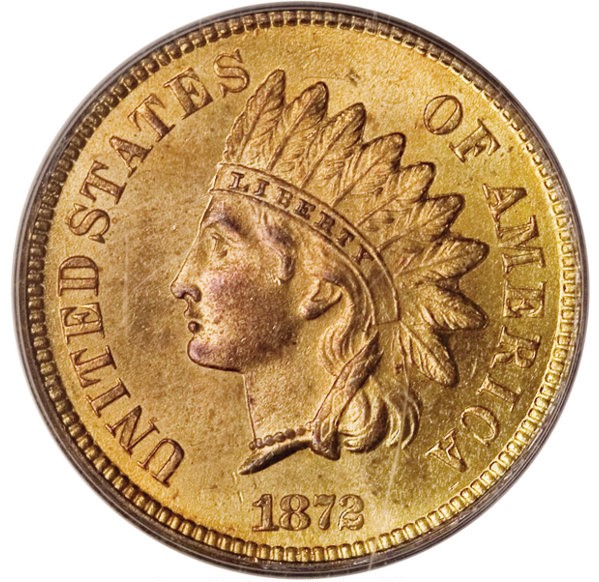
1864 Indian Head Cent, $112,000
1864 marks a rare year in the Indian Head cent mintage that collectors can’t ignore. It was a year when a bronze alloy replaced the copper-nickel metal alloy used in the coin since 1859.
Even with most of the Indian Head cents minted in 1864 using the new bronze alloy, there were a few coins minted in the old copper-nickel alloy.
But the copper-nickel alloy coins are not the rarest of the 1864 Indian Heads. A third group of Indian Heads was minted with an “L” at the neck of the Indian Head, just behind the hair. The “L” is tiny enough that a magnifying glass is needed for detection.
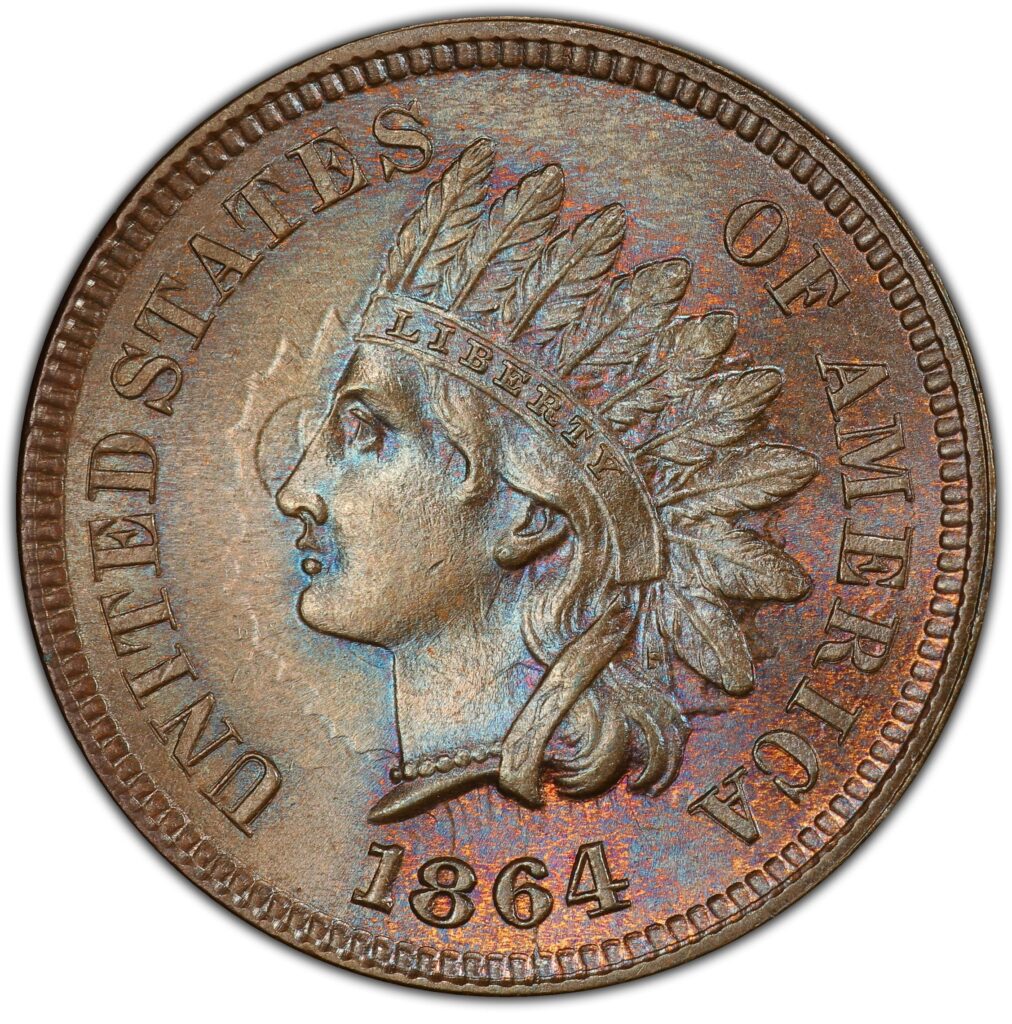
1899 MS68 Indian Head Cent, $108,000
the 1899 MS68 Indian Head penny marks the finest example of the series. With two blemish-free sides and clear mint luster, the 1899 MS68 is recognized in coin collecting circles as a key date and notable coin in penny history.

1897 PR67+ Indian Head Deep Cameo, $108,000
The golden-orange color is brilliant in the 1897 Indian head penny. It was struck with Snow-PR3 dies, and carefully preserved, making it the finest Deep Cameo Indian penny ever certified by PCGS.
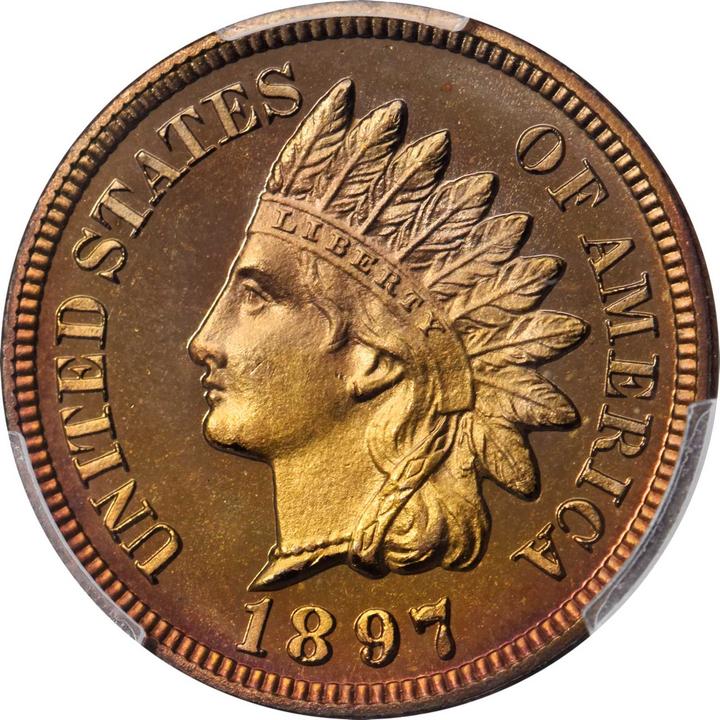
1877 PR67 Indian Head Cent, Red, $97,000
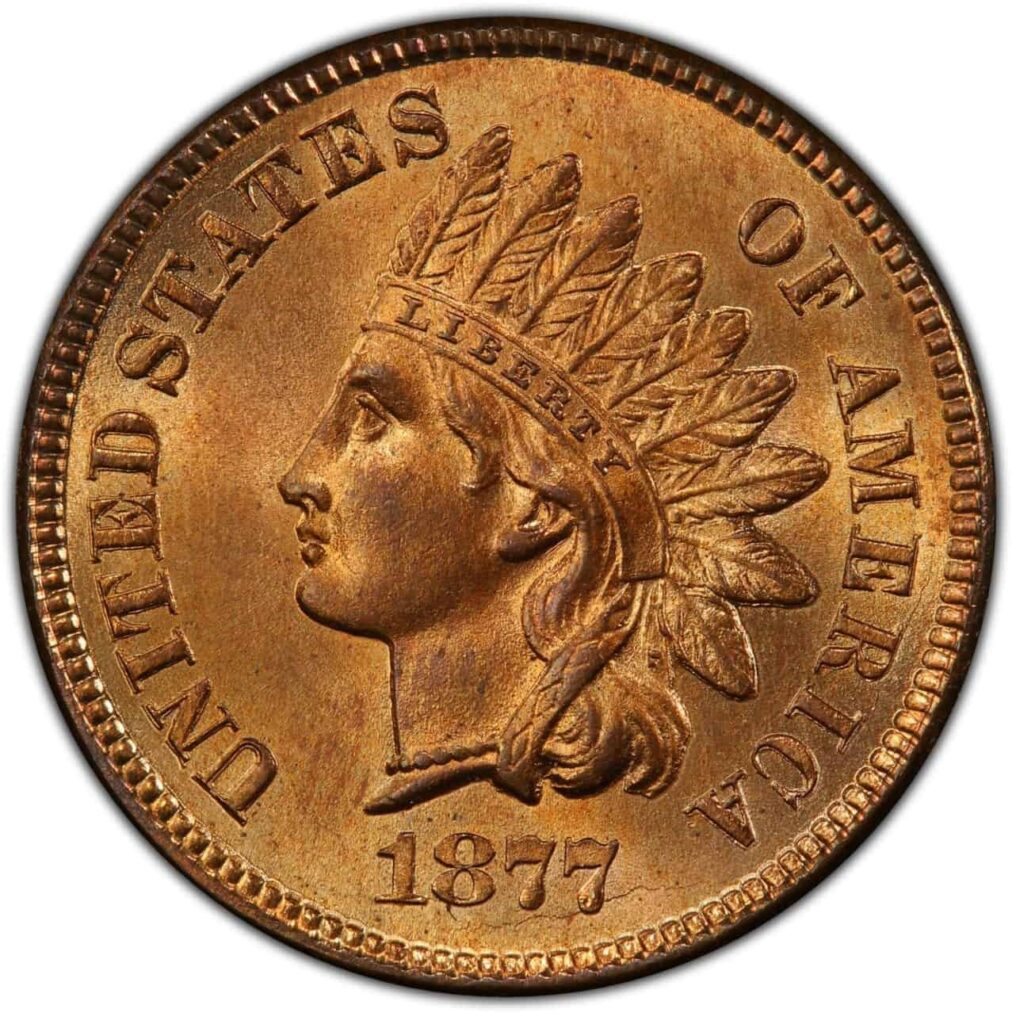
1890 MS67+ Indian Head, Red, $91,000
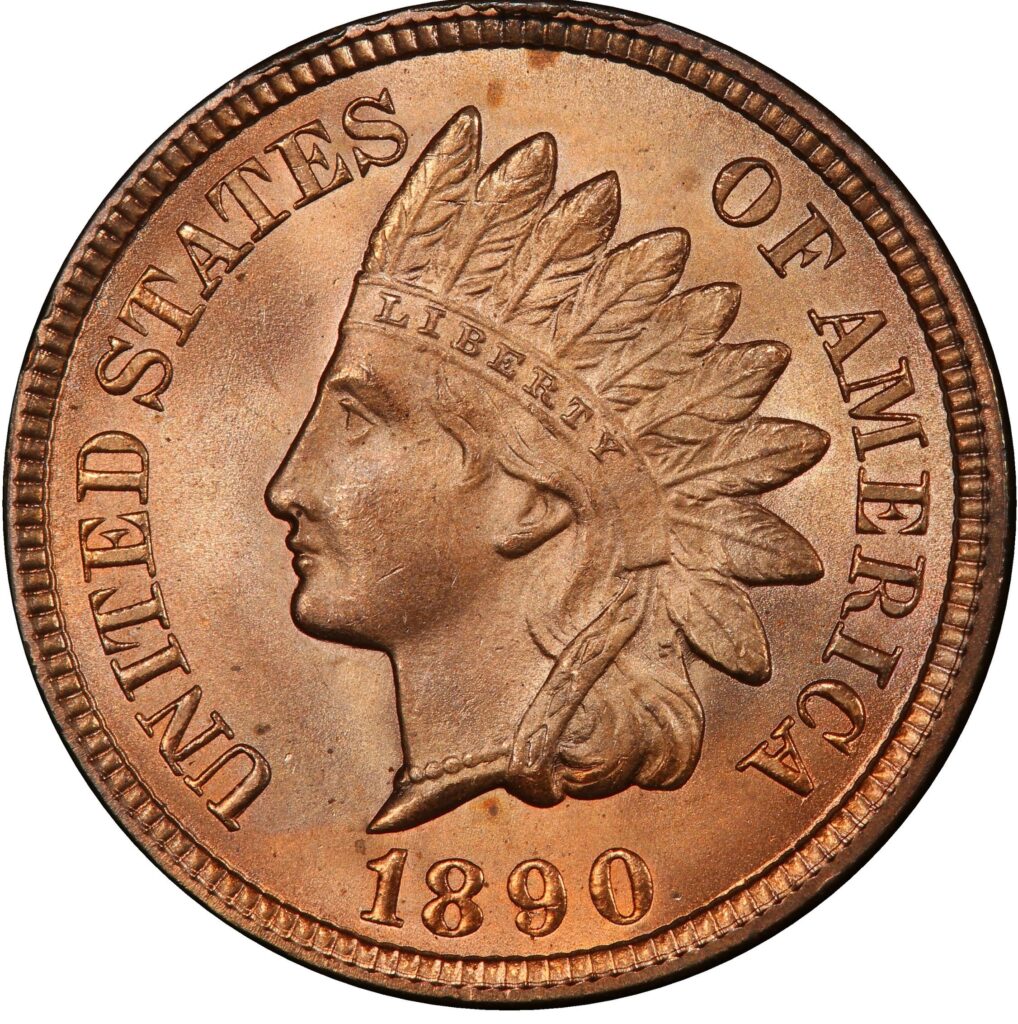
1869 MS66+ Indian Head Cent, $84,000
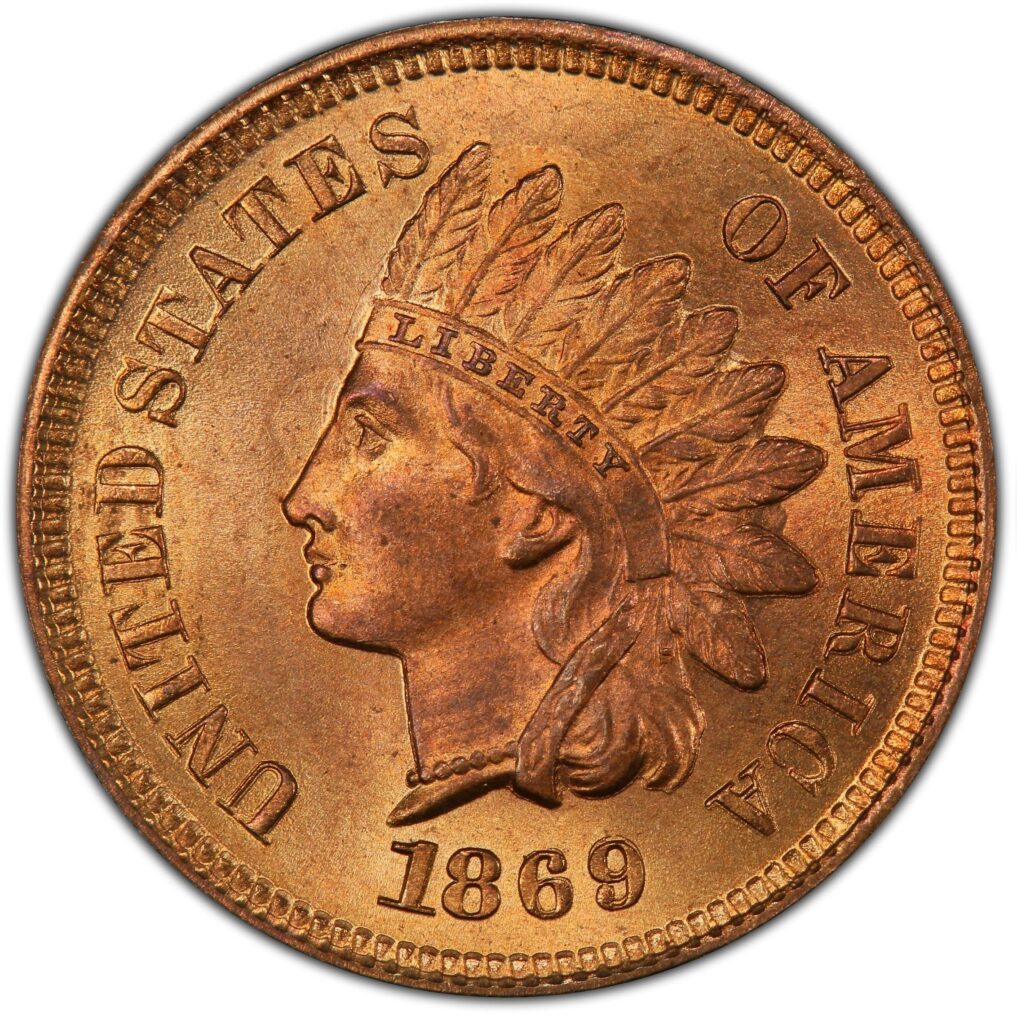
1868 MS66+ Indian Head Cent, Red, $72,000

Why is the Indian Head Penny So Valuable?
The Indian head penny is not made with gold, silver, or other precious metals. It was also minted in huge quantities. Hundreds of millions were struck.
The value of the coin comes from its condition, age, and mint mark of the coin.
Lady Liberty Design
The obverse design features the bust of Lady Liberty wearing a Native American headdress. The reverse depicts a wreath of oak and laurel leaves surrounding the words “One Cent.”
But who is Lady Liberty? And how did Longacre choose the model for the coin? It’s a subject that’s still up for debate.
When the new coin was ordered, Congress debated if George Washington should be the face of the coin. But some objected to matching Great Britain’s tradition of placing monarchs on coins.
The coin’s creator, James B. Longacre, stirred up some controversy with his Lady Liberty design. The public wasn’t able to agree on who was featured on the obverse of the coin.
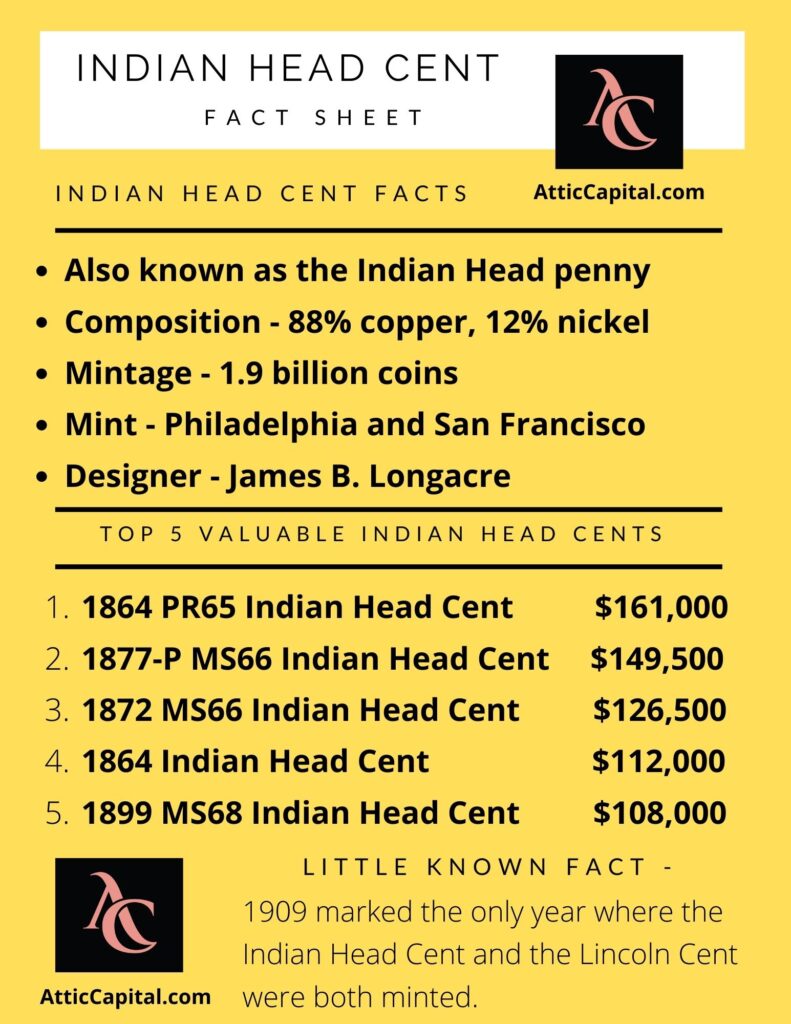
Who is Lady Liberty?
Some say Lady Liberty was actually Longacre’s daughter, Sarah Longacre. Others will strongly deny the fact, stating the portrait is based on the Greek statue, Venus Acroupi, held inside the Vatican Museum.
But a 1985 article in the Los Angeles Times includes a reader’s detailed account that Lady Liberty was, in fact, Sarah Longacre.
Meg Quinn, a great-great-granddaughter of Sarah Longacre, confides that when the chief engraver, James Longacre, invited several Indians, including Sitting Bull, to visit the mint, Longacre’s daughter, Sarah, insisted on meeting the Indians.
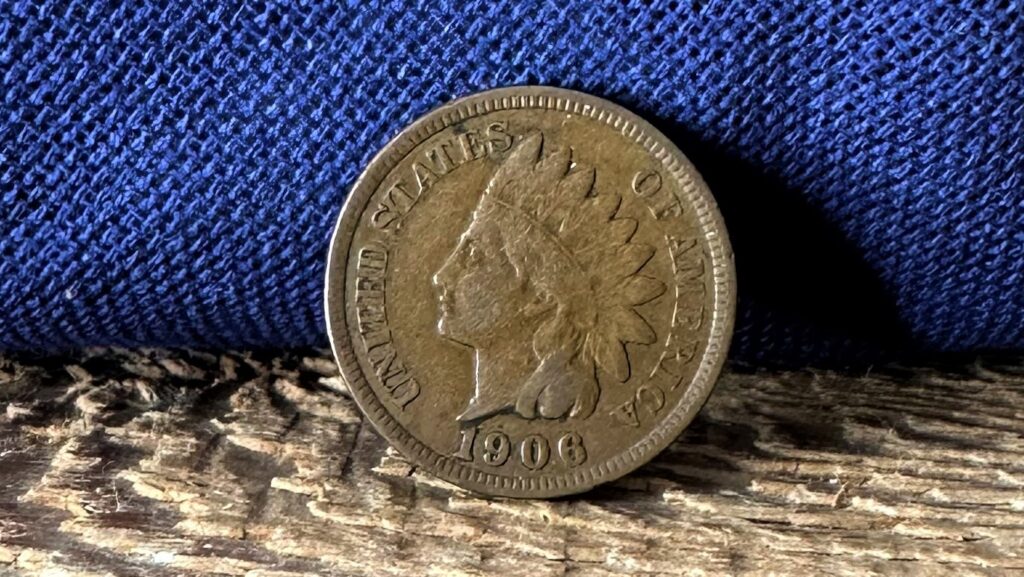
During the meeting, the Indian chief placed his war bonnet on the 12-year-old Sarah’s head. James reached for his sketch pad and entered the rendering in the contest for the new penny design. He won by one vote.
Other numismatics argue Lady Liberty cannot be Sarah Longacre, because she would have been 30 years old at the time of the Indian chief meeting. The debate will continue on.
Rarities and Key Dates Worth Money
Even with rare coins, certain dates command especially high values because of their low mintage numbers.
- 1877 was a year of very low mintage numbers, only 852,000 coins were produced.
- 1908-S Indian Head coins included a small branch mint mark for the first time.
- 1909-S Indian Head pennies was an even lower mintage of just 309,000.
- 1873 Doubled Liberty Error, with the stamped “LIBERTY” doubled.
What Is The Difference Between a Wheat Penny and an Indian Head Penny?
Other than the design, there are a few other differences between a wheat penny and an Indian head penny.
The composition was slightly different, where the Indian Head penny used 88% copper and 12% nickel, and the wheat penny was a 5% tin and zinc alloy and 95% copper coin.
One little-known fact about collector pennies is that 1909 was the year both the Indian Head penny and the wheat penny were minted. It was the last year of the Indian Head and the first year of the Wheatie.
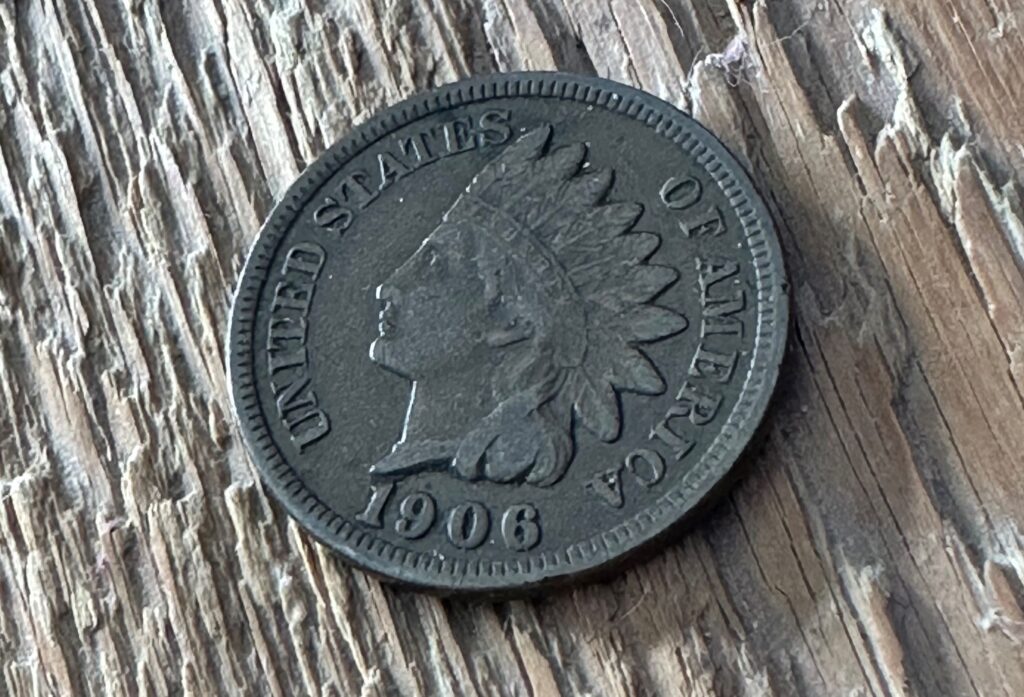
How Are Indian Head Pennies Evaluated?
- First, identify the date and mintmark of the Indian head cent.
- Next, determine the condition by carefully inspecting the wear of the coins elements.
- Finally, research the special factors that might make the coin extra rare, such as errors, or slight inconsistencies.
Average Circulated and Uncirculated Values and Prices
Just like the Buffalo nickel, Roosevelt dimes, or Kennedy half dollars, Indian head pennies are only as valuable as their condition. While coin grading is not an exact science, a few well-known companies have a reputation of excellent coin analysis.
According to the NGC price guide, Indian cent coin values range from $2 to $161,000.
PCGS, another coin grading service, rates Indian Head coins by year and grade. Check out their awesome services here.
While the U.S. Mint is the sole producer of circulated coins, it also produces collector coins. Commemorative, proofs, and uncirculated coins are all released by the U.S. Mint, and can usually be found in excellent condition. And for this reason, rare uncirculated Indian head penny values are much greater.
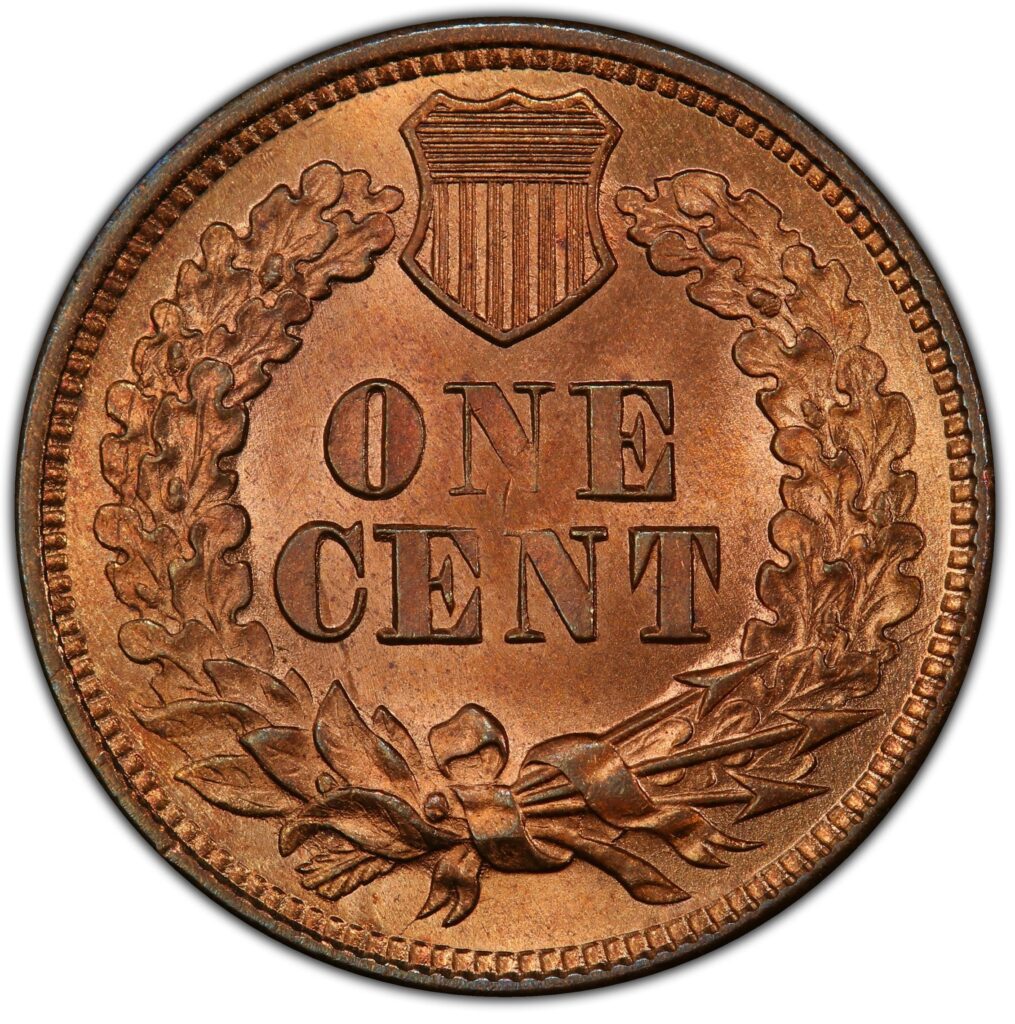
Who Is James Longacre?
One of the most unsuspecting authorities in U.S. Coinage in the 1800s was nonother than James B. Longacre. Born near Philadelphia, Pennsylvania, Longacre began his career as a portrait engraver.
Longacre was appointed Chief Engraver at the U.S. Mint in July of 1844 and would continue at the helm of the mint for the next 25 years.
When the gold rush began in California in the mid-1800s, Congress ordered an increase in gold circulation. They also authorized a new “double eagle” twenty-dollar gold coin, and a one-dollar gold coin. So Longacre promptly began his work as a designer.
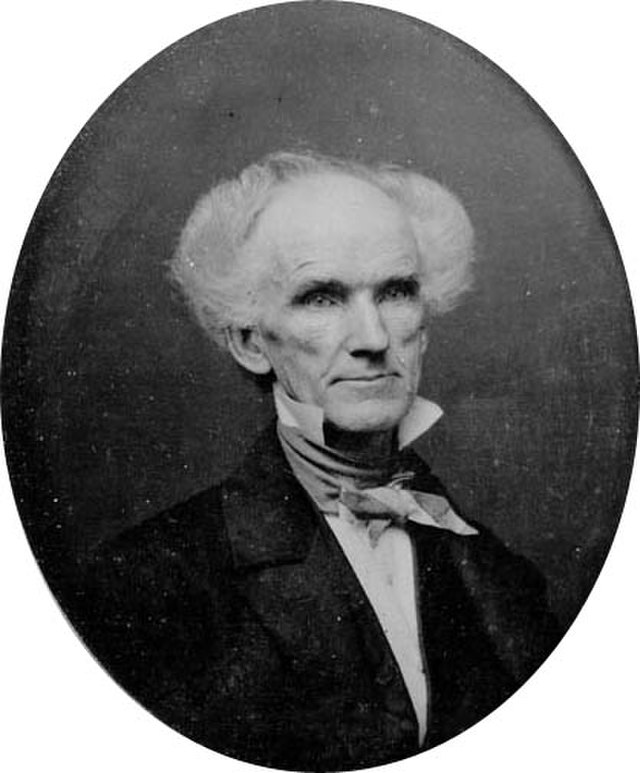
Longacre’s Work at The United States Mint
In 1851, Longacre oversaw the issuance of the three-cent coin, and then the three-dollar gold coin. The new gold coin featured the head of a feathered Indian tiara, which he concluded was symbolic of America.
Just a few years later in 1856, Longacre released the Flying Eagle cent. But because of complications with minting the “Flying Eagle,” it was only produced for two years. In 1859, the new easier-to-strike coin would be named the “Indian Head Cent.”
A Deeper Look at the Indian Head Penny –
So far, we’ve covered –
- The Flying Eagle Cents were not well received by the public, so coin designer James Longacre designed the Indian Head penny in 1859.
- Indian Head Pennies were minted from 1859 until 1909, when the Lincoln Wheat Cent replaced it. Both coins were minted in 1909.
- The most valuable Indian Head penny to ever sell at auction was an 1864 PR65 for $161,000.
Let’s Look at Some Little-Known Facts About the Indian Head –
- Pennies don’t get much attention anymore, but back in the 1850s many Americans were paid 10 cents per hour, so pennies actually mattered in daily life.
- Only 852,500 Indian Head pennies were struck in 1878, by far the lowest mintage year of all Indian Head production years. The Highest mintage year was 1907, when over 108 million coins were struck.
- There are only two years with mint marks on the coins, 1908 & 1909.
- A total of 1.6 billion Indian Head pennies were coined over the nearly 50-year production run.
- In 1864, a small “L” was added to the lower ribbon of the Indian’s headdress designating ‘Longacre,’ the coin designer’s last name.
- To find out if your Indian Head penny is in uncirculated condition, tilt the coin back and forth under good lighting. You should be able to see high points that are unbroken and mint luster, then you know your coin is uncirculated. If you see light scratches, the coin is circulated.
Want to Learn More About Coin Collecting? There’s more –
- Figure out the value of your rare coins.
- I want to sell my coins online, but not sure where to turn. Here’s some solid advice.
- Let’s get you up to speed on U.S. coin basics.
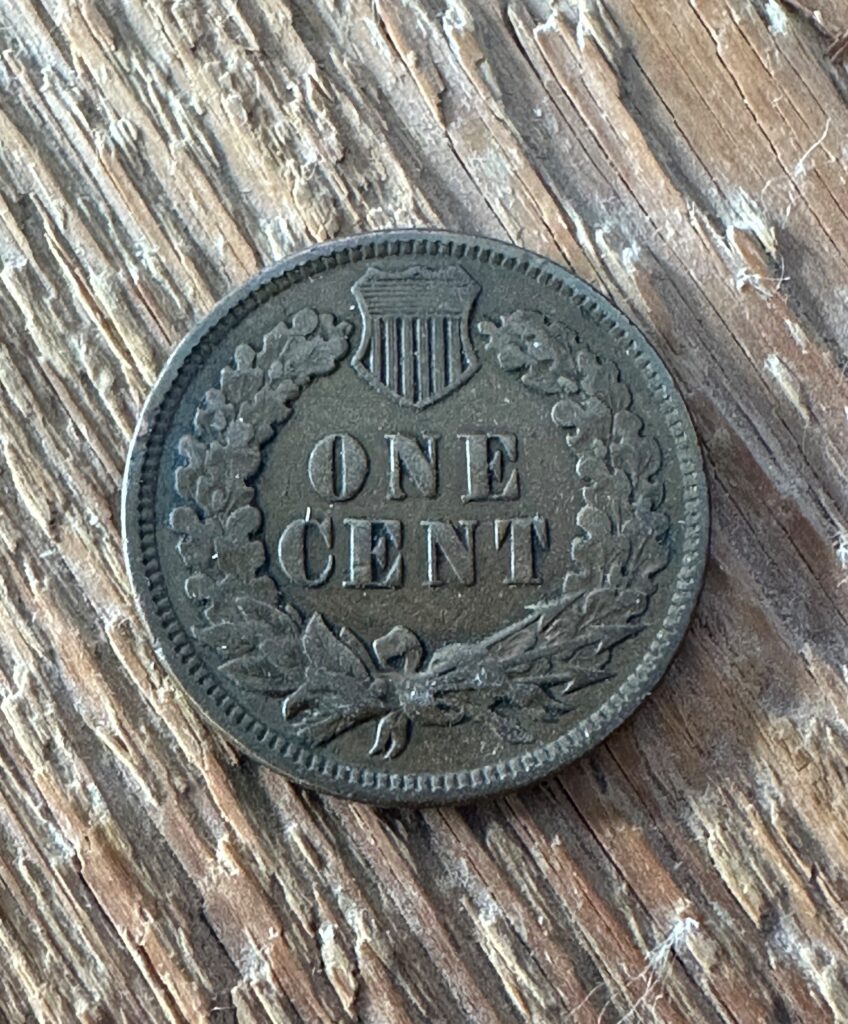
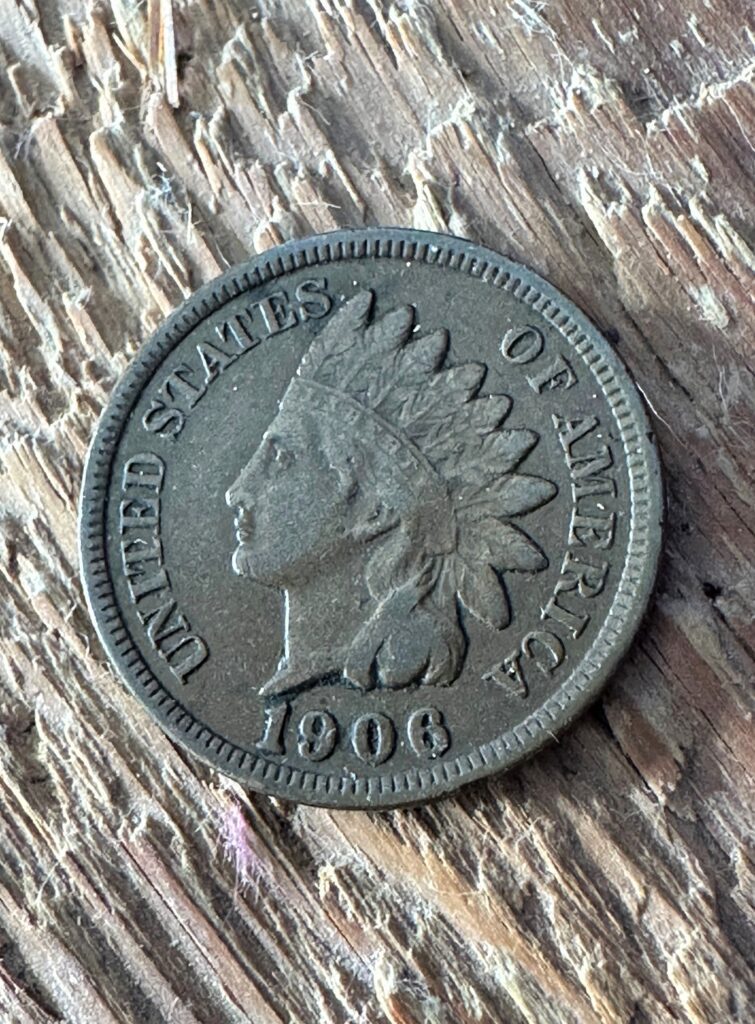
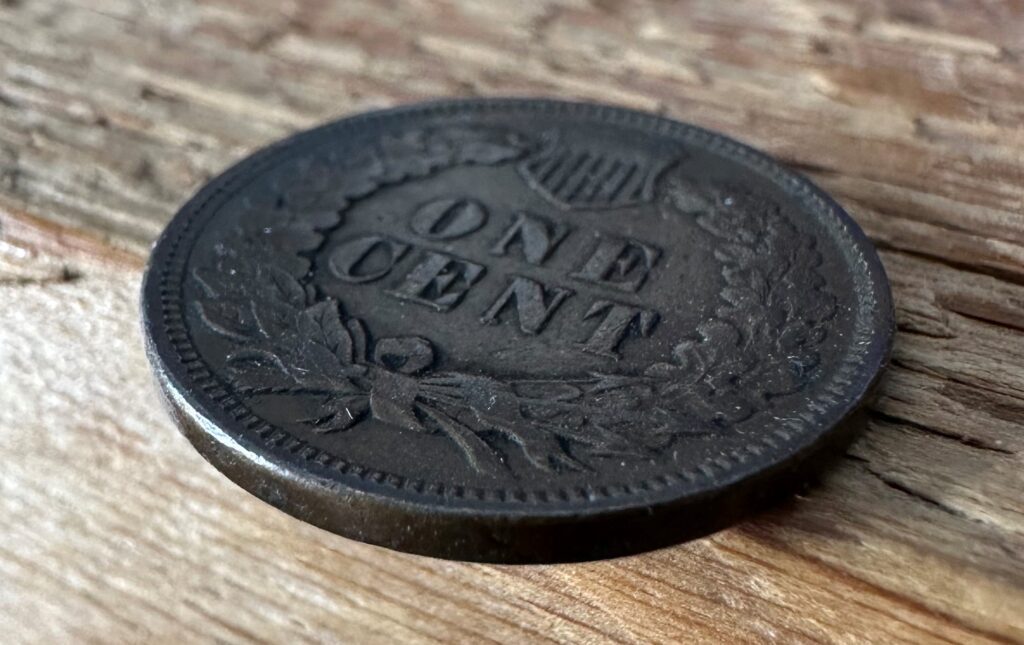
Additional Resources –
A Guide to Indian Head Cents – American Numismatic Association
Coin Programs – The U.S. Mint
